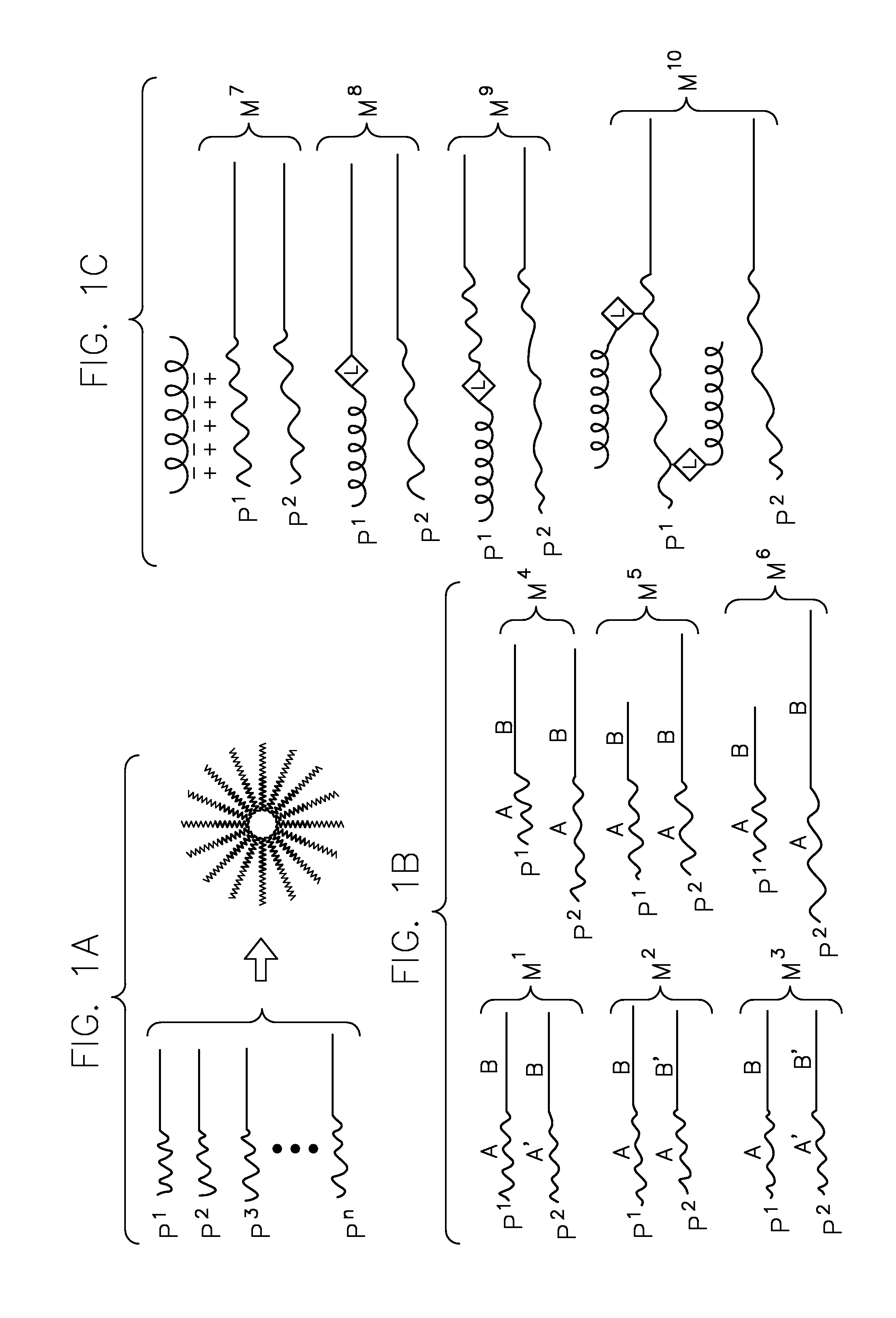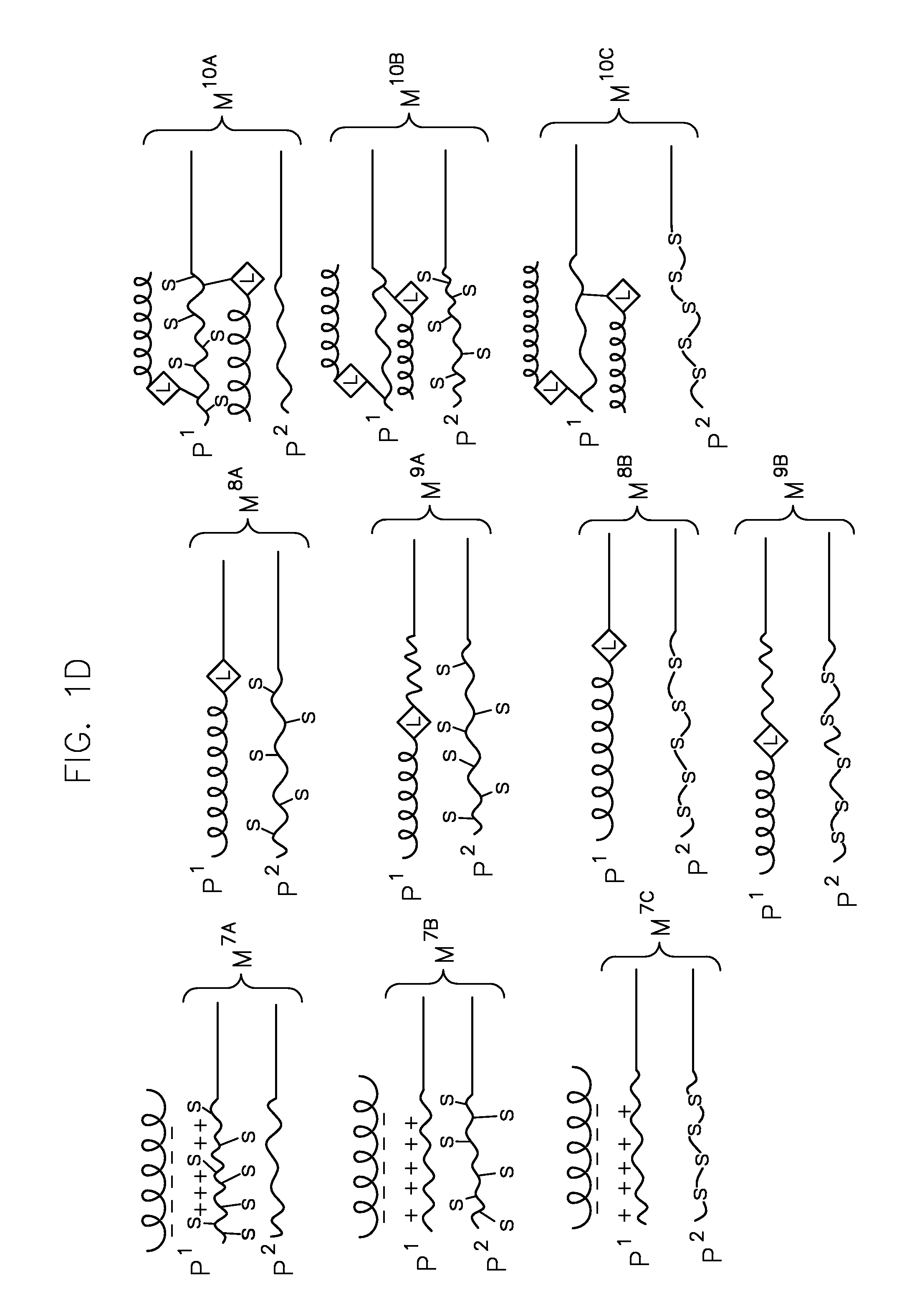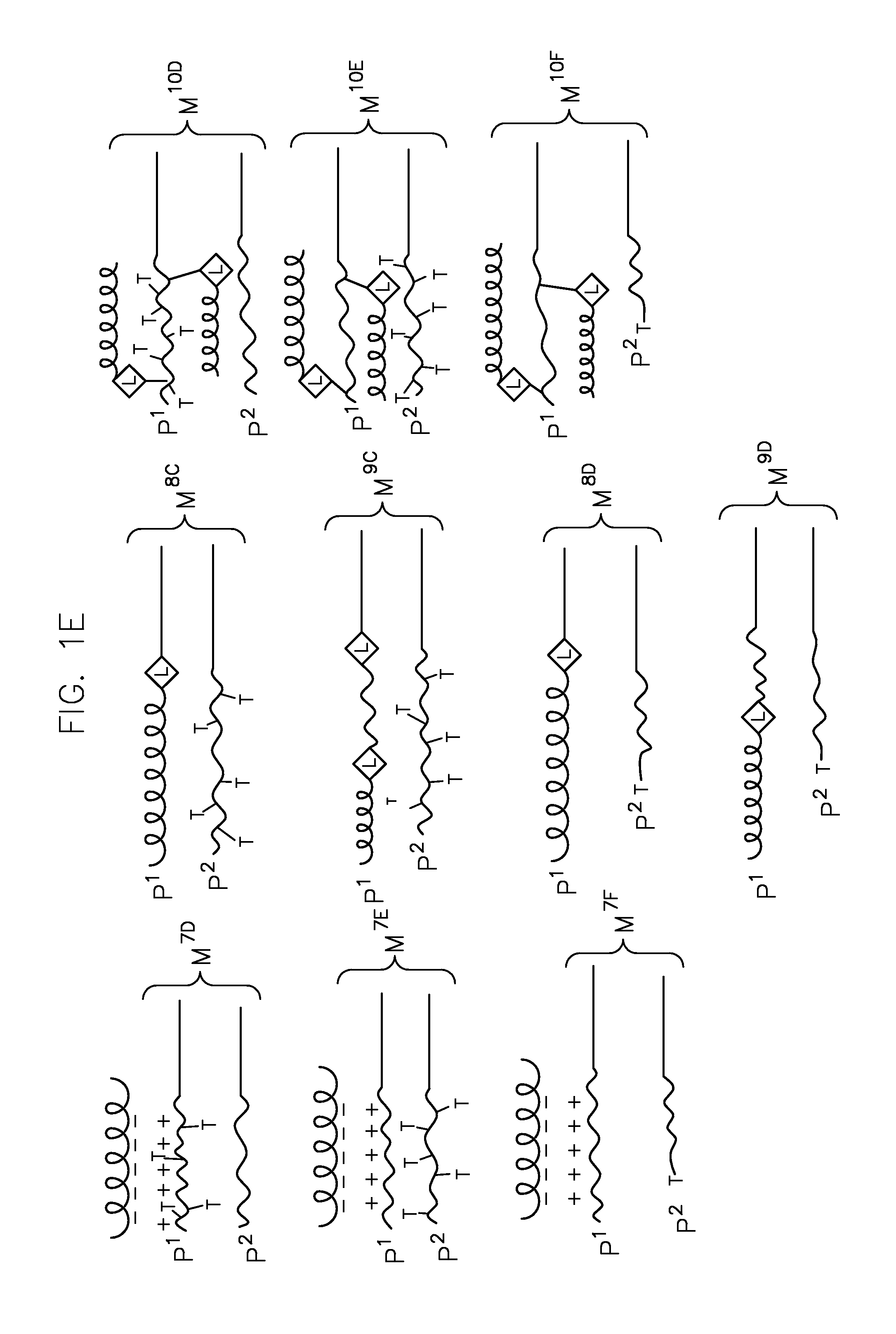Heterogeneous polymeric micelles for intracellular delivery
a polymer micelle and intracellular technology, applied in the field of compositions and methods for intracellular delivery of biomolecular agents, can solve the problems of lack or insufficient functionality of various known systems, ineffectiveness, and inability to consider various known systems, so as to enhance the stability of metabolism, enhance the effect of pharmacokinetics and enhance the desired biodistribution
- Summary
- Abstract
- Description
- Claims
- Application Information
AI Technical Summary
Benefits of technology
Problems solved by technology
Method used
Image
Examples
example 1
General Synthetic Procedures for Preparation of Block Copolymers by Reversible Addition-Fragmentation Chain Transfer (Raft) Polymerization
example 1.1
Preparation of Block Copolymer [DMAEMA]-[DMAEMA / PAA / BMA]
A. RAFT Chain Transfer Agent (CTA)
[0344]The synthesis of the chain transfer agent (CTA), 4-Cyano-4-(ethylsulfanylthiocarbonyl) sulfanylpentanoic acid (ECT), utilized for the following RAFT polymerizations, was adapted from a procedure by Moad et al., Polymer, 2005, 46(19): 8458-68. Briefly, ethane thiol (4.72 g, 76 mmol) was added over 10 minutes to a stirred suspension of sodium hydride (60% in oil) (3.15 g, 79 mmol) in diethyl ether (150 ml) at 0° C. The solution was then allowed to stir for 10 minutes prior to the addition of carbon disulfide (6.0 g, 79 mmol). Crude sodium S-ethyl trithiocarbonate (7.85 g, 0.049 mol) was collected by filtration, suspended in diethyl ether (100 mL), and reacted with Iodine (6.3 g, 0.025 mol). After 1 hour the solution was filtered, washed with aqueous sodium thiosulfate, and dried over sodium sulfate. The crude bis(ethylsulfanylthiocarbonyl) disulfide was then isolated by rotary evaporation. ...
example 1.2
Preparation of block copolymer [PEGMA]-[DMAEMA / PAA / BMA]
A. RAFT Chain Transfer Agent (CTA)
[0350]The chain transfer agent (CTA), 4-Cyano-4-(ethylsulfanylthiocarbonyl) sulfanylpentanoic acid (ECT), was prepared as described in Example 1.1A.
B. Poly(methoxy-(CH2O)7-8-methyl)methacrylate) macro chain transfer agent (polyPEGMA macroCTA)
[0351]The polyPEGMA macro CTA was prepared by RAFT polymerization of methoxy-(CH2O)7-8-methyl)methacrylate (PEGMA) monomer substantially as described in Example 1.1B (using PEGMA in place of DMAEMA).
C. Block copolymer of [PEGMA]-[DMAEMA / PAA / BMA] from poly(PEGMA) macroCTA
[0352]Desired stoichiometric quantities of DMAEMA, PAA, and BMA were added to poly(PEGMA) macroCTA dissolved in N,N-dimethylformamide (25 wt % monomer and macroCTA to solvent). For all polymerizations [M]o / [CTA]o and [CTA]o / [I]o were 250:1 and 10:1 respectively. Following the addition of AIBN the solutions were purged with nitrogen for 30 min and allowed to react at 68° C. for 6-12 h, copolym...
PUM
| Property | Measurement | Unit |
|---|---|---|
| Acidity | aaaaa | aaaaa |
| Atomic weight | aaaaa | aaaaa |
| Atomic weight | aaaaa | aaaaa |
Abstract
Description
Claims
Application Information
 Login to View More
Login to View More - R&D
- Intellectual Property
- Life Sciences
- Materials
- Tech Scout
- Unparalleled Data Quality
- Higher Quality Content
- 60% Fewer Hallucinations
Browse by: Latest US Patents, China's latest patents, Technical Efficacy Thesaurus, Application Domain, Technology Topic, Popular Technical Reports.
© 2025 PatSnap. All rights reserved.Legal|Privacy policy|Modern Slavery Act Transparency Statement|Sitemap|About US| Contact US: help@patsnap.com



